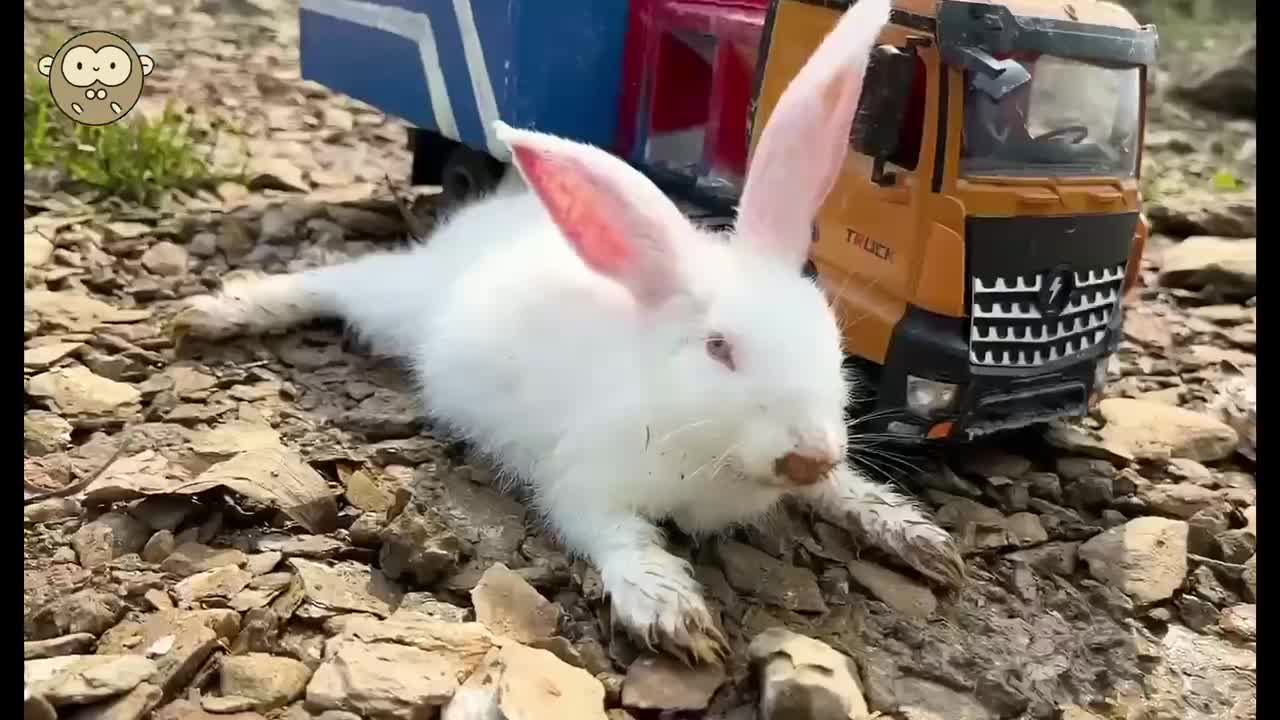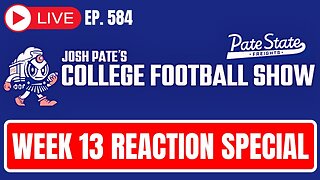Premium Only Content

Monkey and rabbit carrot communication
Monkey Monkey is a common name. Many of the primates we call monkeys. Primates are orders of the class Mammalia. The highest group in the animal kingdom, with developed brains; The orbit is anteriorly oriented with narrow orbital spacing; The toes of the hands and feet are separated, the thumbs are flexible, and most of them can be held in pairs with other toes. Including prosimian and simian suborders. Prosimian has a fox-like face; No cheek pouches or gluteal callose; Forelimbs shorter than hindlimbs, thumb and big toe developed, and other fingers (toes) opposite; Tail should not be curled or missing. The simian suborder has a human-like face; Most cheek pouches and gluteal callose; Forelimbs are mostly longer than hindlimbs, big toes some degeneration; The tail is long, some curly, some tailless. According to the regional distribution or nostril structure, simian suborder is divided into broad-nosed monkey group, also known as New World monkeys; Group of snub-nosed monkeys, also known as Old World monkeys. This order consists of about 51 genera and 180 species belonging to 11 families, distributed mainly in warm regions of Asia, Africa and the Americas. Most live in forest areas. The largest primates are gorillas, which can weigh up to 275kg, while the smallest are bonotammosets, which weigh only 70g. Most skulls of primates have large cranial cavities, which are spherical in shape, due to shorter jaws and flatter faces. The orbital posterior process develops into bony eye ring, or the orbital socket is completely closed. Most species have short noses, and their sense of smell is secondary to sight, touch and hearing. Some lower species have highly developed olfactory centers in the brain, and act largely by smell. Some lemurs have long snouts. The nasal bones of snub-nosed monkeys and dolphin-tailed langurs degenerate into upturned nostrils. Proboscis monkeys have large, long noses. These special types are formed as muscle or cartilage develops. The thumb and toe of the foot can be held together, making the hand and foot grasping organs. The 5 fingers of the original monkey can only bend and extend at the same time, not individually. The palm surface and □ surface are bare, with finger and toe patterns, and the patterns are different. Having very soft or wide pads, all of them are linear except the black ape. The fingers and toes of most species are flat. Generally, there is little difference in the length of the forelimbs, but the forelimbs of gibbons and orangutans are much longer than the hindlimbs. Apes and humans are tailless, and among species that have tails, the length of their tails varies greatly, from a single protuberance to more than the length of their bodies. Capuchin most species of the tail with grasping function, known as the "fifth hand". Some Old World monkeys, such as baboons, have brightly colored skin on the face, rump, or chest, especially during breeding. The buttocks have lumps of thick, hard skin called gluteal callose. Most species have one pair of nipples on the chest or under the armpit, and one pair of nipples on the abdomen of the finger monkey. The male penis is pendulous, most of the penis bone, but tarsiers, monkeys, and some species do not have. The brood is wrapped in a pouch. The female body has a bichorned uterus or a single uterus. Body coat, some soft and fine, some coarse hard, or locally very long, or in the coat with heterochromatic links. Some hair on the top of the head is very long, forming a plexiform crown, or very short, flat top, or bald hairless. Some have long hair on both cheeks or under the jaw, like a beard. Some were covered with long hairs on their shoulders, backs and buttocks. Some have very bright hair. Most primate camps are arboreal or semi-arboreal in some form, with ring-tailed lemurs, baboons, and old monkeys inhabiting ground or rocky areas. Usually in small family groups, but also in large groups. Most can walk upright, but not for long. More in the daytime activities, night activities have pointed monkeys, some indri, night monkeys and so on. The great and bonobos lemurs aemaze for days to weeks during the hot dry season. Most of them are omnivorous, eating plant or animal food. The choice of food and feeding methods are different. For example, monkeys are good at picking insects in tree holes or stone gaps. Orangutans are big eaters and spend almost the majority of their active time foraging. Colobus monkeys have a special stomach structure, most of the species eat coarse fiber more plant food
-
 2:04:09
2:04:09
Nerdrotic
6 hours ago $38.51 earnedNew Peruvian Megalithic Site Discovery w/ Michael Collins | Forbidden Frontier #083
91.7K4 -
 LIVE
LIVE
Fresh and Fit
6 hours agoMyron TRIGGERED Rubi Rose, And Debating Cry Baby Blax On X Spaces!
6,046 watching -
 LIVE
LIVE
TheSaf3Hav3n
5 hours ago $10.63 earnedCALL OF DUTY: BLACK OPS 6 | A QUIET PLACE: THE ROAD AHEAD | #RumbleTakeOver
1,523 watching -
 4:05:35
4:05:35
TheNateVibez
4 hours agoOmni-🤖 - First Rumble Stream.🫡 - VETERAN
30.3K -
 2:59:26
2:59:26
Tundra Gaming Live
9 hours ago $3.34 earnedThe Worlds Okayest War Thunder Stream//FORMER F-16 MAINTAINER//77th FS//#rumblefam
20.7K -
 2:32:19
2:32:19
DemolitionDx
5 hours agoSunday night COD with friends.
58.7K1 -
 2:10:14
2:10:14
vivafrei
15 hours agoEp. 237: More Trump Cabinet Picks! MAHA or Slap in the Face? Canada on Fire! Go Woke Go Broke & MORE
196K247 -
 2:23:21
2:23:21
SOLTEKGG
5 hours ago $4.06 earned🟢 First Day on RUMBLE!
43.4K3 -
 LIVE
LIVE
Vigilant News Network
9 hours agoCOVID-Vaccinated Hit With Grave New Reality | Media Blackout
1,764 watching -
 1:26:31
1:26:31
Josh Pate's College Football Show
9 hours ago $3.29 earnedSEC Disaster Saturday | Major CFP Earthquake Coming | Officiating Is A Disaster | New Studio Debut
29.5K2